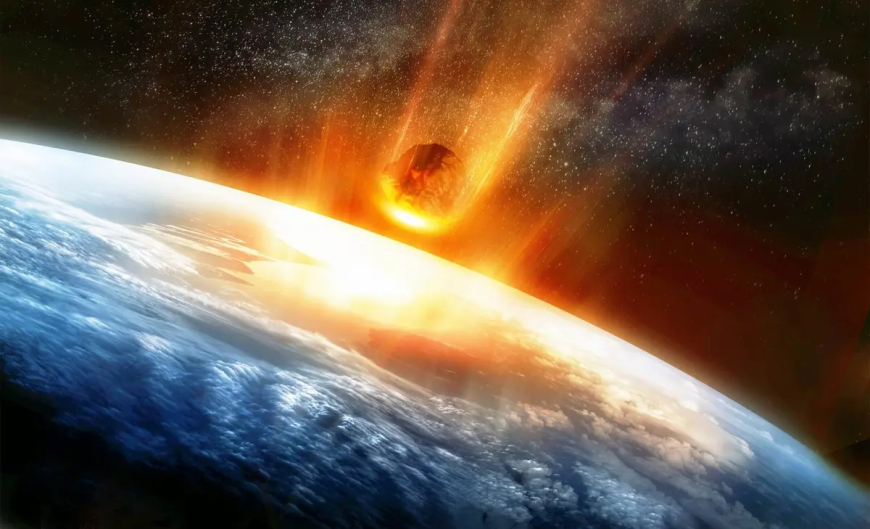Asteroid 2024 YR4: NASA's Latest Findings on the Potential Earth Impact
NASA is tracking Asteroid 2024 YR4, which has a 2.3% chance of impacting Earth in 2032. Learn the latest updates, risk assessments, and planetary defense strategies.

The vastness of space is filled with celestial bodies, some of which occasionally cross paths with Earth’s orbit. One such object that has recently caught the attention of astronomers and space agencies worldwide is Asteroid 2024 YR4. Discovered in late December 2024, this near-Earth object (NEO) has raised concerns due to its projected trajectory, which suggests a potential impact risk in the year 2032.
But how real is this threat? Is 2024 YR4 a ticking cosmic time bomb, or will it pass by harmlessly like most other asteroids? Here’s a detailed look at what NASA and other space agencies have found so far and what it means for Earth.
The Discovery of Asteroid 2024 YR4
On December 27, 2024, astronomers using the Asteroid Terrestrial-impact Last Alert System (ATLAS) in Río Hurtado, Chile, made a significant discovery—an asteroid on a potential collision course with Earth. Initially, the chances of impact were calculated to be around 1%, but with new observations, this probability has now increased to 2.3%, according to NASA’s Center for Near-Earth Object Studies (CNEOS).
While this may seem alarming, scientists emphasize that there is still a 97.7% chance that the asteroid will safely pass by our planet without any harm. Nonetheless, given its estimated size and potential impact energy, 2024 YR4 has warranted increased monitoring and further investigation.
Size and Potential Impact Consequences
Based on preliminary calculations, Asteroid 2024 YR4 is estimated to be between 130 and 300 feet (40 to 90 meters) in diameter. This makes it relatively small compared to planet-killing asteroids, but still large enough to cause serious local devastation if it were to strike Earth.
To put this into perspective, the infamous Tunguska event of 1908, which flattened approximately 800 square miles of Siberian forest, was likely caused by an object about the same size as 2024 YR4. If an asteroid of this magnitude were to hit a populated area, the consequences could be severe—widespread destruction, firestorms, and massive shockwaves.
However, there’s still a lot of uncertainty about its exact size and mass. That’s why NASA and other space agencies are now using high-powered telescopes and radar observations to refine these estimates and improve predictions about the asteroid’s path.
NASA's Latest Tracking and Updated Risk Assessment
As of February 2025, NASA has classified Asteroid 2024 YR4 as a Level 3 threat on the Torino Impact Hazard Scale. This means that while the asteroid requires attention, the risk of an actual impact remains low.
The Torino Scale, which ranges from 0 (no threat) to 10 (certain impact with catastrophic effects), is used to assess the potential danger posed by asteroids. Level 3 suggests a close encounter that warrants careful observation but is not an immediate cause for panic.
NASA and other international agencies, including the European Space Agency (ESA) and the International Asteroid Warning Network (IAWN), are closely monitoring 2024 YR4’s movement. As astronomers collect more observational data, the impact probability is likely to change—in most cases, these probabilities decrease over time as calculations become more precise.
Advanced Space Observations: What’s Next?
To gain a clearer picture of 2024 YR4’s trajectory, NASA plans to use the James Webb Space Telescope (JWST) to observe the asteroid in March and May 2025. The JWST’s powerful infrared capabilities will allow scientists to measure its composition, rotation speed, and surface characteristics.
These observations are crucial in determining:
✅ The asteroid's exact size and mass
✅ Its potential impact energy
✅ Possible changes in trajectory due to solar radiation pressure
If further studies suggest an increased likelihood of impact, NASA and international agencies could explore planetary defense strategies, such as deflection missions or impactor spacecraft designed to alter the asteroid’s course.
What If Asteroid 2024 YR4 Is on a Collision Course?
While the chances of an impact are still low, it’s worth considering how space agencies might respond if 2024 YR4 posed a real threat.
???? Deflection Missions – Agencies like NASA and ESA have been developing planetary defense technologies, such as the DART (Double Asteroid Redirection Test) mission, which successfully altered the orbit of an asteroid in 2022. Similar techniques could be used to push 2024 YR4 off its collision path.
???? Evacuation Plans – If an impact became inevitable, authorities could focus on evacuating populations from potential impact zones to minimize casualties.
???? Nuclear or Kinetic Impact Options – While highly controversial, in extreme cases, some scientists suggest using nuclear explosives or high-speed kinetic impactors to break up or redirect an asteroid.
Final Thoughts: Should We Be Worried?
The discovery of Asteroid 2024 YR4 has undoubtedly stirred public curiosity, but there’s no immediate reason to panic. While its impact probability has increased to 2.3%, this number will likely decrease as new observations refine its trajectory.
NASA and international space agencies are actively tracking the asteroid, ensuring that if action is needed, they have time to develop and deploy a solution. For now, we can continue watching the skies with fascination, knowing that scientists are keeping us safe.
One thing is certain—asteroids like 2024 YR4 serve as a reminder of the importance of planetary defense and why continued investment in space monitoring is crucial for the future of our planet.
What's Your Reaction?
 Like
0
Like
0
 Dislike
0
Dislike
0
 Love
0
Love
0
 Funny
0
Funny
0
 Angry
0
Angry
0
 Sad
0
Sad
0
 Wow
0
Wow
0



















































